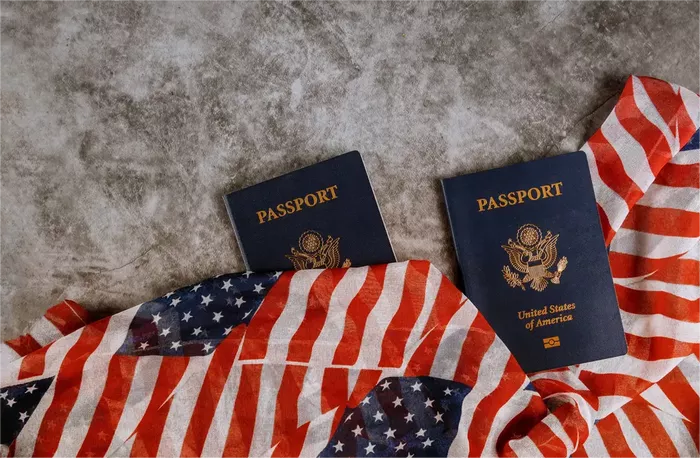The United States is a land of opportunity, attracting millions of visitors, immigrants, and temporary workers from around the globe each year. Whether for business, pleasure, education, or employment, individuals often require visas to enter and stay in the country legally. However, the U.S. visa system is complex, with various types of visas tailored to specific purposes and circumstances. Understanding the nuances of these visas is crucial for anyone planning to travel to or stay in the United States. In this article, we’ll delve into the intricacies of the U.S. visa system, exploring the different types of visas available and the eligibility criteria associated with each.
Nonimmigrant Visas
Nonimmigrant visas are designed for individuals seeking temporary entry into the United States for a specific purpose, such as tourism, business, education, or temporary employment. These visas do not grant permanent residency or citizenship but allow individuals to stay in the U.S. for a limited duration. The following are some common categories of nonimmigrant visas:
1. B-1/B-2 Visitor Visas: The B-1 visa is for individuals visiting the U.S. for business purposes, such as attending meetings or conferences, while the B-2 visa is for tourism and other non-business purposes. Both visas typically allow stays of up to six months.
2. F-1 Student Visa: Intended for individuals enrolled in academic programs at accredited U.S. institutions, the F-1 visa permits students to study full-time in the United States. Students must maintain a valid course of study and may be authorized to work on or off-campus under certain conditions.
3. H-1B Specialty Occupation Visa: This visa is for individuals employed in specialty occupations that require specialized knowledge, typically in fields such as science, engineering, or information technology. The H-1B visa is subject to annual numerical limits and requires sponsorship by a U.S. employer.
4. J-1 Exchange Visitor Visa: The J-1 visa is for individuals participating in approved exchange visitor programs, including research scholars, professors, students, and cultural exchange participants. Participants are expected to return to their home countries upon completion of the program.
5. L-1 Intracompany Transfer Visa: Designed for employees of multinational companies, the L-1 visa allows for the temporary transfer of executives, managers, or employees with specialized knowledge from a foreign office to a U.S. office.
6. O-1 Extraordinary Ability Visa: Reserved for individuals with extraordinary abilities or achievements in their field, the O-1 visa is granted to those who have demonstrated sustained national or international acclaim.
Immigrant Visas
Immigrant visas, also known as green cards, are for individuals seeking permanent residency in the United States. These visas grant holders the right to live and work permanently in the country and eventually apply for citizenship. The process of obtaining an immigrant visa is more complex and lengthy than that of nonimmigrant visas and typically involves sponsorship by a family member, employer, or through other immigration channels. Some common immigrant visa categories include:
1. Family-Based Visas: These visas are available to close relatives of U.S. citizens or permanent residents, including spouses, children, parents, and siblings. The availability of family-based visas is subject to numerical limits and preference categories.
2. Employment-Based Visas: Reserved for individuals with specific job offers from U.S. employers, employment-based immigrant visas are categorized into several preference categories based on factors such as skill level, education, and labor market demand. Examples include the EB-1 visa for priority workers, the EB-2 visa for professionals with advanced degrees, and the EB-3 visa for skilled workers.
3. Diversity Visa Lottery: The Diversity Visa (DV) lottery, also known as the green card lottery, is a program that provides visas to individuals from countries with historically low rates of immigration to the United States. Winners of the lottery are selected through a random drawing and must meet certain eligibility requirements to qualify for permanent residency.
4. Refugee and Asylee Visas: Individuals fleeing persecution or violence in their home countries may be eligible for refugee or asylee status in the United States. Refugee status is granted to individuals who apply for resettlement from outside the U.S., while asylum status is granted to those who apply for protection while already present in the country.
Special Categories
In addition to nonimmigrant and immigrant visas, there are several special categories of visas designed for specific purposes or circumstances:
1. Diplomatic and Official Visas: Reserved for diplomats, government officials, and employees of international organizations, diplomatic and official visas facilitate travel to the United States for official government business.
2. Victims of Trafficking and Crime: Special visas, such as the T visa for victims of human trafficking and the U visa for victims of certain crimes, provide protection and immigration benefits to individuals who have suffered abuse or exploitation.
3. K-1 Fiancé(e) Visa: Intended for foreign fiancé(e)s of U.S. citizens, the K-1 visa allows individuals to enter the United States for the purpose of getting married within 90 days of arrival. After marriage, the foreign spouse can apply for adjustment of status to obtain permanent residency.
4. Religious Worker Visas: Religious workers, including ministers, priests, and other religious workers, may be eligible for special visas that allow them to work in religious occupations or for religious organizations in the United States.
Conclusion
The U.S. visa system encompasses a wide range of visa categories designed to accommodate various purposes and circumstances. Whether individuals are seeking temporary entry for business, education, or tourism, or are pursuing permanent residency through family sponsorship, employment, or refugee status, understanding the different types of visas and their eligibility requirements is essential for navigating the complex immigration process. By familiarizing themselves with the intricacies of the U.S. visa system and seeking guidance from qualified immigration professionals when necessary, individuals can increase their chances of obtaining the appropriate visa and achieving their immigration goals in the United States.


